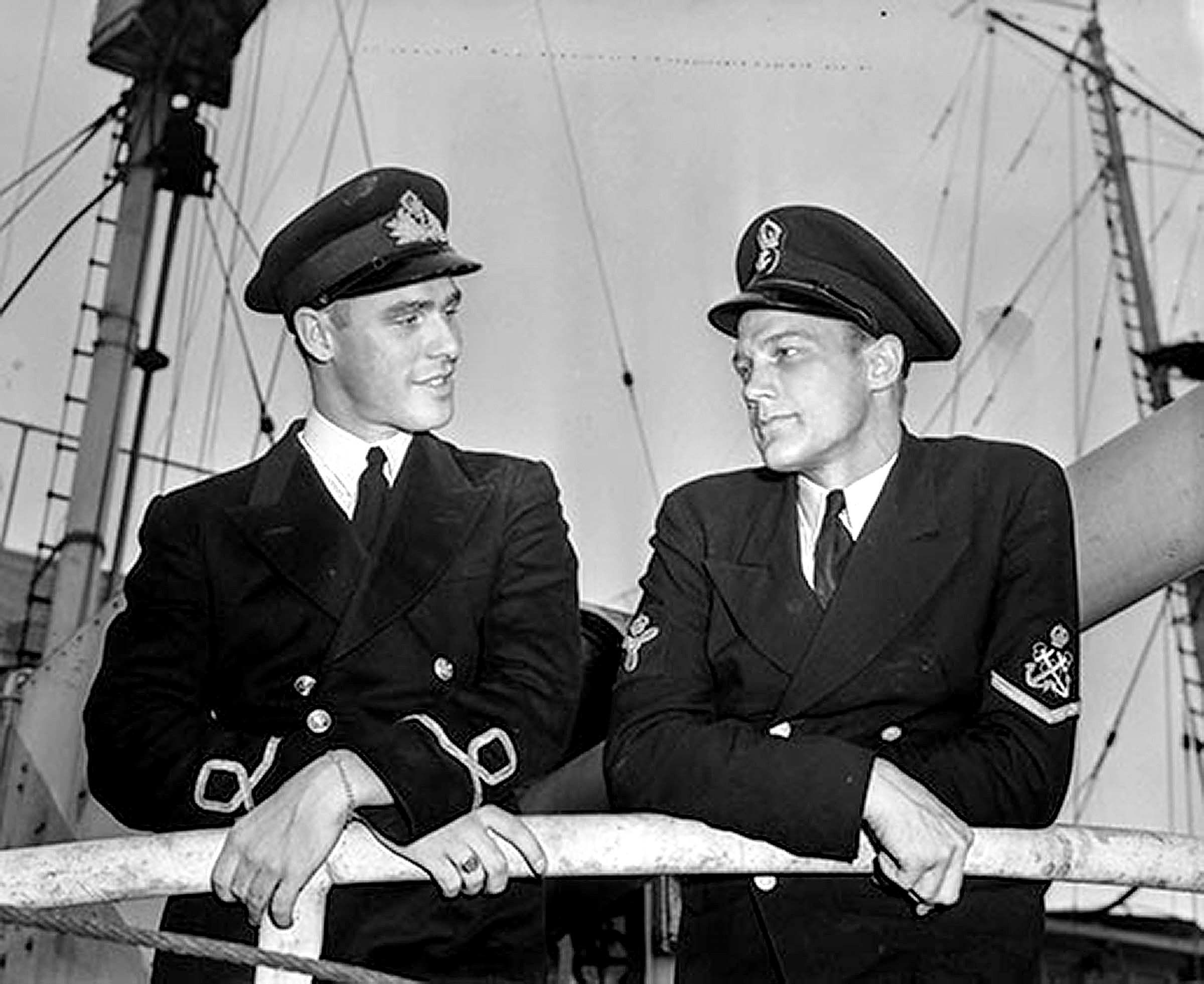Tom Slater & Tom St. Amand
When he leapt over the side of the HMCS Oakville and landed eight feet below on the deck of a crippled German submarine, Stoker Petty Officer Art Powell was acting on instinct.
Wearing only his underwear and carrying a flashlight and .45 revolver, the 23-year-old Point Edward man had no definite plan in mind. With him was Sub-Lieutenant Hal Lawrence.
The two officers knew they had to commandeer U-94 by capturing the Germans on board, or kill them if they resisted.
The submarine’s deck was slippery and rolling and a dead German they passed washed into the warm Caribbean waters.
As they ran to confront two submariners near the bullet-riddled conning tower, a wave knocked Lawrence over the side. A desperate Powell pulled him back aboard.
At that point both men realized their ship, the damaged Oakville, had lost power and was drifting away.
The two Canadians were now completely on their own. And what unfolded was, as one witness described it, “the stuff of Hollywood.”
HMCS Oakville was a corvette escorting Canadian oil tankers on convoy between Halifax and the island of Aruba. Oil was “the life blood of the war” and the Germans were determined to stop its flow.
In a seven-day stretch that summer U-boats had torpedoed twelve ships in the Caribbean.
On Aug. 27, 1942, a moonlit night, U-94 was hunting in the waters between Cuba and Haiti. The Oakville was one of nine escorts on a convoy of 21 tankers heading to a U.S. port on the east coast.
Powell admitted later that, “We knew the convoy would be hit that night.”
As midnight approached, the Oakville’s radar still hadn’t detected U-94, but an American Patrol Bomber did. Before the submarine could fire its torpedoes the plane dropped four, 650-pound depth charges that exploded around the sub. The bombs disabled the U-boat’s two bow hydroplanes, making it impossible for the crew to control the sub underwater.
The Oakville then launched its own depth charges.
The U-boat surfaced not long after about a football field away, looking dark and sinister in the moonlight. The Oakville tried to ram it, twice, but both attempts failed. But her guns didn’t miss.
Each time the sub surfaced and German sailors poured onto the deck to access the sub’s own guns they were cut down by the corvette’s fire. The Oakville’s guns also destroyed one of the sub’s two deck guns and battered the conning tower.
With U-94 now nearly stationary, Oakville rammed it squarely, and when the corvette slipped alongside Powell and Lawrence jumped onto its deck.
Powell was resourceful, and a proven man of action. Before enlisting, his quick thinking had saved two miners overcome by underground gas, and while on leave months earlier he’d saved a small girl in a Sarnia Bay elevator slip.
The first two Germans they confronted near the conning tower didn’t resist. Revolvers in hand, the Canadians ordered them to go aft and to jump overboard.
The next two submariners emerging from the conning tower hatch lunged at the Canadians. Powell and Lawrence shot both men, who toppled overboard.
Lawrence then shone his flashlight in the open hatch and ordered the rest of the men on top. The Germans understood and, fearful of being trapped in their sinking sub, bolted up the ladder.
Powell mustered them in a line towards the stern, his revolver always visible. Lawrence went below to try and save U-94. He was up to his chest in water, checking the gauges and valves, when he heard Powell shout, “Come on top, sir—she’s sinking.”
Powell ordered the Germans into the sea and Lawrence and he followed.
A few minutes later, U-94 sank.
Fearing sharks and holding their revolvers above water to keep them dry, Powell and Lawrence trod water near the Germans until a U.S. ship arrived.
Word of the Canadians’ heroism spread quickly. A propaganda poster was created, and Powell laughed when he heard he was getting a medal. What he did, he said, was part of the job.
Nevertheless, Powell received the Distinguished Service Medal and Lawrence, the Distinguished Service Cross.
Nineteen of the Germans were dead, and the remaining 26 detained as prisoners at Guantanamo in Cuba.
After the war, Art Powell returned to Point Edward, where his parents and siblings had settled in 1941. In the early 1950s he moved to Sarnia and lived there another decade until his work took him to London. As a civil engineer, he surveyed waterways throughout the Great Lakes
Powell never entirely left Sarnia, however, returning regularly to train Sea Cadets and march with Sarnians on Remembrance Day.
His daughter, Barbara Crichton, remembers her dad “as decisive and generous, a man who lived an adventurous, fulfilling life.”
When Art Powell died in 1997, people recalled his heroism that August night. But perhaps the greatest sign of respect he received came the day after U-94’s capture.
When the submarine’s commander spotted Powell aboard the U.S. rescue ship the German officer saluted.
Powell returned the gesture.


